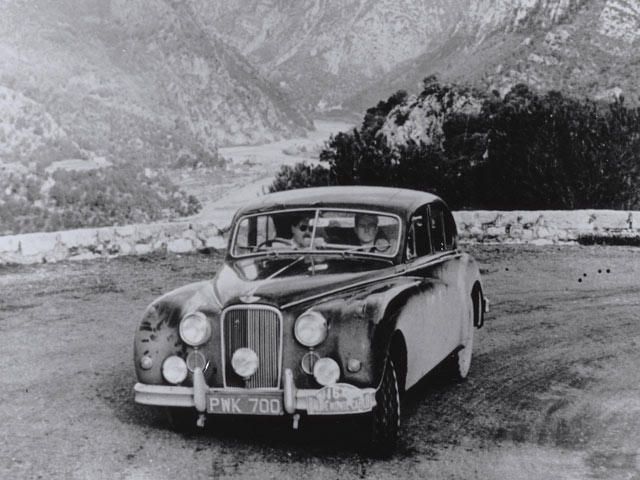The Monte Carlo Rally wasn't resumed until 1949, exactly 10 years since the last run of the event. The winners that year were Jean Trevoux and Marcel Lesurque in a Hotchkiss, just like 10 years earlier. Over the next 30 years, the rally took off spectacularly. It was only at the dawn of the television era, when Europe was not yet awash with amusement parks and the like, when motor racing and rallying were followed assiduously by hundreds or even thousands of spectators who lined the routes of every great motor race or rally.
Having some 200 crews was typical for the annual event, though over 300 were registered. In 1953, the CIS, the sport governing body at the time, introduced a European Championship for Drivers, though it was clear that the "Monte" was the most prestigious classification rally. And in the beginning of the 1960s, rallying became even more professional. The chances for success for the many private drivers became even slimmer due to the new participation of professional manufacturers' teams. The Monte Carlo Rally also became famous for his night stages, the climb to the Col de Turini and other passes through the Alps.
There were also the slippery roads often covered with either white snow or black ice which drivers often failed to detect. During the '70s, the World Rally Championship became even more popular as the rallies became even more homogenous, though the Monte Carlo Rally's organizers were able to maintain the traditional start from various locations round Europe. However, the trips became more symbolic than a real competition. In 1966 the rally suffered a heavy blow to its reputation when 10 cars, among them the top three placing British made Mini Coopers, were disqualified due to faulty headlamps.
Pauli Toivonen, in a Citroen ID, was crowned the winner. Rosemary Smith, who won the Coupe des Dames (the ladies' class) in another British made car, a Hillman Imp, was also disqualified. Beginning in the 1960s, Scandinavian drivers became the heroes of the championship as they displaced British and French drivers who had dominated previously. The most awesome cars in rallying, Group B cars, emerged during the first half of the '80s. Those were 4X4 2.0-liter turbo charged cars with advanced engine management systems and advanced transmission systems.
Because regulations stipulated only a very small number of cars to be produced, only a handful of them were tuned to take part in the rallies and many manufacturers tried their luck with Group B rallying. Later on, Ford, Peugeot, Lancia, MG-Rover, and Citroen all developed unique cars with advanced technologies that hadn't been seen since the demise of Group B cars following a fatal crash at the 1986 Corsica Rally. Throughout all of those upheavals, however, the Monte Carlo Rally maintained its stature as the crown jewel of the World Rally Championship.
Because of its status, the organizer, the AMC, felt less inclined to accept demands made by the FIA. As a result, it was excluded from the WRC and joined the competing series, IRC. That enabled the AMC to renew a few neglected routes and to form its own relationship with broadcasting organizations to further improve its prestige. And in 2012, for its 101st year and its 80th edition, the Monte Carlo Rally will be back in the WRC - but this time on its own terms.

